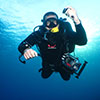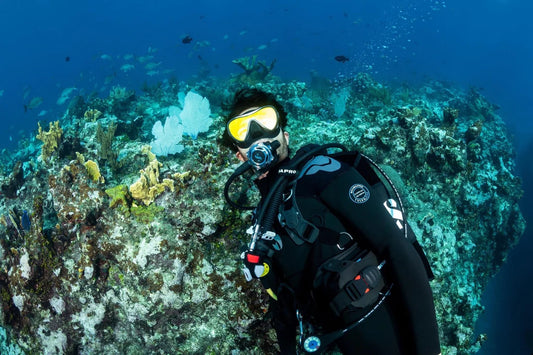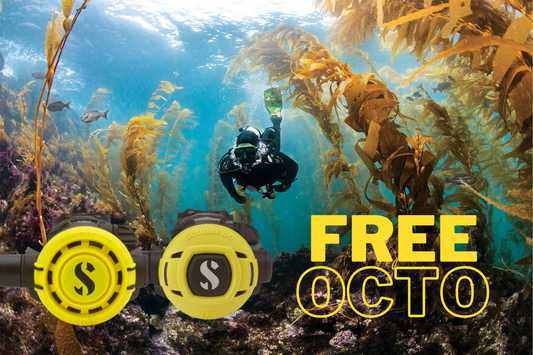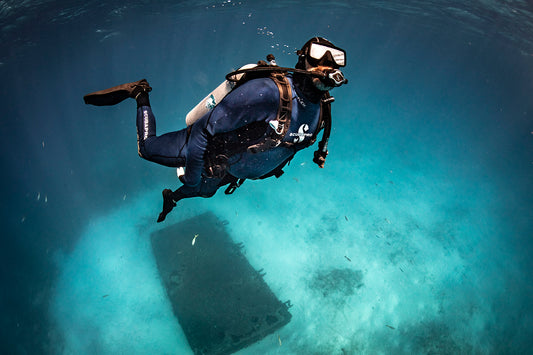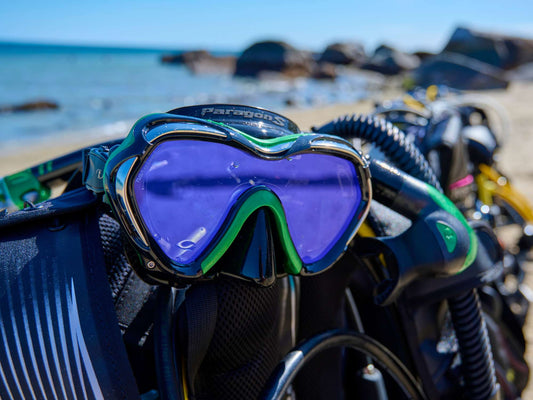Like many people, I am spending more time at home doing social distancing and have a little bit more time to reflect on my diving career, read some inspirational books or blogs and plan for when all this is over.
Nowadays, the scuba diving industry diversified into different types of diving, creating a fantastic range of opportunities accessible to just almost everyone. If you, like me, have been thinking about changing or improving your equipment setup or looking to expand your diving knowledge and skills - now is the time to do it.
I enjoyed beach holidays at the seaside snorkelling and swimming in the Baltic Sea. Even essential snorkelling equipment wasn't that easy to come by, but I was considering myself lucky. My grandfather gave me a pair of old WW2 frogman fins and the whole set was furnished with an old mask my father found on the beach in France with a DYI snorkel.
SINGLE TANK SETUP
I remember buying my first set of equipment at Mike's Dive Store. It was 1996, and I have just completed my scuba diving course with CMAS, saved some money working on a yacht as a deckhand and decided to buy my first scuba set. Some of it is still in use - it was Mares BCD, a pair of Poseidon regulators and a computer every young man wanted to have - Uwatec Aladin Pro. It served me well during my trips to the UK coast, diving in lakes and holidays abroad. Since then the whole diving industry moved significantly forward, and with the advent of donut bladders and backplates, even single tank setup received edgy and fabulous looks.
RISE OF A TWINSET DIVER
At the beginning of naughties, I was lucky enough to take part in a couple of research trips in the Baltic Sea. Unfortunately, the standard single tank configuration was not sufficient for the job any more. I had to look at something different, something that will give more redundancy and more bottom time for the advanced wreck diving we were about to do. The logical choice was to move onto a twinset. A few of my friends were in a cave diving club, so I decided to use a well tested Hogarthian back mount style. We also took full advantage of our brand new dry-suits and new advanced decompression dive computers - the other two vital pieces of equipment you need to think about when taking up cold water diving.
Manifolded twinset will not only give you loads of air - enough for deeper decompression dives or multiple dives - but it will provide you with much-needed redundancy in an emergency. For the same reasons, it may also be appealing to a weekend UK diver. You don't have to be a technical diver to dive it, but I would strongly recommend finding a twinset familiarisation workshop with a professional.
Modern twin set consists of the manifolded or independent twin tanks, backplate, wing and harness. You can also pick and choose from a wide range of essential accessories like spools, SMBs or safety tools z-cutters. Using twinset configuration enabled me to explore the best wreck diving sites, including Scapa Flow, the Baltic Sea, the Mediterranean and the Red Sea.
SIDEMOUNT DIVING - NOT ONLY FOR CAVE DIVERS
Sidemount setup offers fantastic benefits such as streamlining, excellent trim and balance. While it provides outstanding redundancy and volumes of gas just like a twinset, unlike twinset it delivers better access to valves and equipment management. A few years back sidemount kit has been used mainly in cave diving. Doing exploration in an overhead environment, we were making our DIY sidemount kits, but today's configurations from major scuba brands became more popular with recreational divers. A lot of them make a conscious decision to move to sidemount simply because the weight of the steel 15L tank or a twinset on their backs is too much. It is a very versatile setup, and I used in wreck diving off the south coast of UK, cave and mine exploration or even holiday diving abroad.
REBREATHER - ULTIMATE DIVING MACHINE
As I progressed in my diving career and started deeper diving and using helium mixes, it became apparent that the cost of gas became a bit of a problem. We had some exciting diving plans drafted, and it was time to look at other options, which in the long term, will make our diving more gas and cost-efficient. A few months earlier, while diving in the Red Sea, one of the instructors in Sharm offered me a try dive on Ambient Pressure Diving Inspiration rebreather and I fell in love with it. Getting buoyancy right was a bit of a challenge but created a good learning curve.
Rebreather has a few advantages over regular scuba. Near-silent bubble-free operation – fish think you are one of them (great for UW photo video applications). Gas efficiency – you can stay underwater for hours. Diving comfort – rebreather circulate warm air which is a considerable advantage when diving in cold waters. No-deco time extension and decompression benefits – delivering optimum decompression gas mix. Recently rebreather became more accessible for a regular recreational diver, and a lot of diving agencies will run recreational rebreather courses. It may not be suitable for everyone, but it may be right for you? Thanks to rebreather technology, a lot of explorers managed to push exploration boundaries even further, and I managed to dive one of the most incredible wrecks in the world like HMS Hermes off Sri Lankan coast.
Many factors have determined my path in diving but meeting inspirational diving professionals and reading inspirational books had a significant influence over the way my diving career progressed. No matter what one thing is for sure - I am looking forward to being reunited with my diving buddies and enjoy my UK diving later on this year, more than ever!
Shem
If you are looking for equipment advice or would like to discuss your future configuration ping me an e-mail support@mikesdivestore.com.

